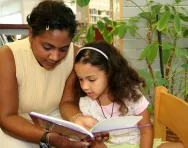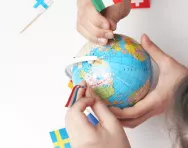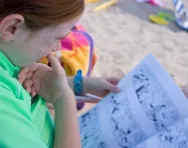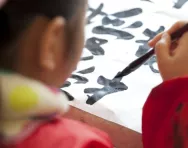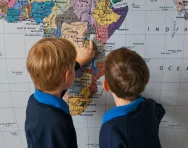TheSchoolRun.com closure date
As we informed you a few months ago, TheSchoolRun has had to make the difficult decision to close due to financial pressures and the company has now ceased trading. We had hoped to keep our content available through a partnership with another educational provider, but this provider has since withdrawn from the agreement.
As a result, we now have to permanently close TheSchoolRun.com. However, to give subscribers time to download any content they’d like to keep, we will keep the website open until 31st July 2025. After this date, the site will be taken down and there will be no further access to any resources. We strongly encourage you to download and save any resources you think you may want to use in the future.
In particular, we suggest downloading:
- Learning packs
- All the worksheets from the 11+ programme, if you are following this with your child
- Complete Learning Journey programmes (the packs below include all 40 worksheets for each programme)
You should already have received 16 primary school eBooks (worth £108.84) to download and keep. If you haven’t received these, please contact us at [email protected] before 31st July 2025, and we will send them to you.
We are very sorry that there is no way to continue offering access to resources and sincerely apologise for the inconvenience caused.
How to help your child learn a foreign language

Recent research from the Department for Education indicates that early language learning positively affects a child’s personal and social development, including their cultural understanding. It also helps to improve literacy skills and acts as a building block for future language learning.


Boost your child's maths & English skills!
- Follow a weekly programme
- Maths & English resources
- Keeps your child's learning on track
While language provision has increased dramatically in primary schools over the last few years, the standard of teaching can vary widely and a few schools still don't offer languages at KS2. Parents often want a more active role in their child’s language learning, but are unsure what to teach, particularly if their own language skills are limited.
Choosing the right language
The main language offered at primary school is French, followed by Spanish and German, and secondary schools follow a similar pattern. Schools in Wales regularly teach Welsh while some schools in Ireland might also teach Gaelic.
Start off with a language you know or like the sound of. Mother of Callum, 8, and Aidan, 6, Pat, chose to teach her children Spanish as she knew the basics and loved the country. "We liked the idea of travelling in Spanish-speaking countries and thought this would broaden their cultural horizons,” she says.
Understanding language skills
At school pupils usually learn languages by listening first, then repeating sounds or words and later reading and writing.
Listening and speaking
Both older and younger children will love listening to nursery rhymes and songs. Even if they don’t understand what they hear, they will be unconsciously absorbing the pattern of language sounds. As their interest grows, you can teach them a few greetings, tell them days and dates and practise saying some basic questions and answers.
It’s not a problem if you have no prior knowledge of the language. There are numerous cassettes and books for adults and children that offer translations and pronunciation so you can learn together.
Reading and writing
If your children are fairly confident readers and their writing is tidy and fast, there’s nothing to stop you encouraging them to read and write in the foreign language. Pat bought a Spanish 'lift the flap' book for her sons.
And reading doesn’t have to involve books. You can put posters up with clear words and pictures, write labels to stick on furniture, or make or download a few simple word searches.
Cultural learning
You can broaden the whole language experience by exploring life in the countries in which the language is spoken. And don’t limit yourself to just one country. While French is spoken in France, look at African French speaking areas too, such as Guadeloupe and Martinique.
Pat took her children on holiday to Mexico, where they spoke a few words of Spanish, but if you don’t have the opportunity to travel, make use of the internet, library and DVDs. If you have cable television, or digital radio, you might be able to access foreign language channels.
What do I do next?
- Find an after school or weekend language club, where your children can meet other learners and perhaps community language speakers.
- Look for a tutor who could teach your child one-to-one or in a group.
- Find your child a pen friend in a different country and exchange postcards and cultural details as well as letters or emails.
- Online courses like those designed to introduce primary school children to French by Les Puces offer interactive teaching videos and printed resources so you can help your child learn a new language at home.



